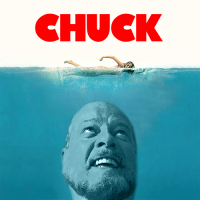Home › Bond Movies › Music
Reporting For Duty
It looks like you're new here. If you want to get involved, click one of these buttons!
Quick Links
Categories
Gunbarrel music ranking game
(At my request, for the sake of order, this thread was split from the "Detailed gunbarrel music guide + Gunbarrel music ranking game" thread. The gunbarrel music guide thread can be found here).
ORIGINAL POST:
A question:
Would anybody be up for a ranking game, like the ones @GoldenGun does, focused on the gunbarrel music of the films?
(The film scores already had a ranking game, and personally I'm not that interested in ranking the songs).
The fascination for me stems from the fact that, for the most part, we're talking about the same piece of music, with only the arrangement changing. Would anyone be interested?
If we had, say, 10 people submit votes, that could make for an interesting game and discussion.
The resources you need to make a decision are all on the first post of this thread in this link:
[Click here]
RESULTS:
The results of the game are in this post (SPOILERS!):
[Click here]
^ Back to Top
The MI6 Community is unofficial and in no way associated or linked with EON Productions, MGM, Sony Pictures, Activision or Ian Fleming Publications. Any views expressed on this website are of the individual members and do not necessarily reflect those of the Community owners. Any video or images displayed in topics on MI6 Community are embedded by users from third party sites and as such MI6 Community and its owners take no responsibility for this material.
James Bond News • James Bond Articles • James Bond Magazine

Comments
I'm very much up for this! I was actually going to start a thread asking people for their top 3 gun barrels. This idea is better >:D<
Question:
I guess the opening chords of YKMN count for CR while the gunbarrel is visible, or does only the high G count?
Well, they count, considering they are heard over the footage of the gunbarrel. I didn't break them down when I wrote the above post, though, probably because they didn't catch my ear, since the only music that's truly unique to the sequence is the opening violin tremolo.
Count me in :-bd
Cowbell! We need more cowbell!!
I don't think there was a bad gunbarrel until the Craig era.
Eh I think Die Another Day’s was pretty ludicrous because of that bullet.
I have updated the OP with some better links, and replaced a dead one. I've also improved certain descriptions of the gunbarrels. You can use that post as a reference guide to
(detailed gunbarrel music guide now found here)
...create a list that contains a ranking of the gunbarrel music of the 25 James Bond films produced by EON Productions. Use the criteria of your choice. Here's a few suggestions:
-Quality of arrangement
-Originality of arrangement
-Consistency of the gunbarrel music with the rest of the respective film score
-Suitability of the gunbarrel music to the onscreen footage
-Suitability of the gunbarrel music for the style and tone of the film
-"Timelessness" of the gunbarrel music
-Quality of composition (for gunbarrels that don't use the James Bond Theme)
-Simple musical enjoyment
Please send the list via private message to me within the next two weeks (just click on my username, and in the top right, click the message button). Deadline is November 25, 2023.
(Please avoid posting the list here in order to preserve the surprises until after the game is concluded.)
After November 25, I'll take your lists (and mine), create the unified ranking and reveal each gunbarrel from lowest ranked to highest ranked. Hopefully, that'll create an interesting discussion.
Have fun and leave any questions you might have below this post!
For instance I like the TLD gunbarrel in its totality, but musicwise it isn't the most notable one...
Yes, we're playing the long game here!
It's a tough task because the gunbarrel music, to me, is the most hopeful, anticipatory moment of any Bond film, even those that don't deliver...
I had a hard time ranking them myself.
You're welcome @goldenswissroyale!
Same. TBH, I really don't care for the music cutting to the concluding chords of the Bond theme after the gun is fired. I prefer the guitar/strings melody played for 4 bars as Barry usually had it.
John Barry's traditional format works better, IMO than any other arrangement.
This gunbarrel music ranking should prove ridiculously easy for me.
I have received five lists so far. With my own, we have six. Four more people on this thread have manifested their interest in submitting lists.
Deadline is November 25, so one week to go. Remember to send me your list if you haven't done so! And if you're just reading this for the first time, we could also use your list!
Three people who expressed interest in participating have yet to send their lists!
Anyime.